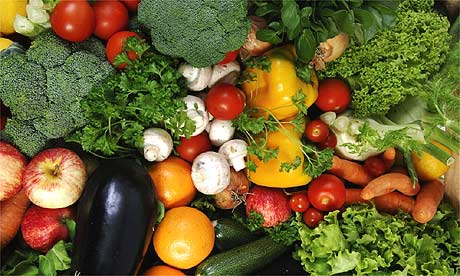One of my favorite authors is Michael Pollan. He has a direct, yet eloquent style of stating facts. He makes reading about government issues interesting and relevant. I discovered an article of his from April 2007, which is still very interesting and relevant today.
Thanks to
Michael Pollan and The New York Times:
"
A few years ago, an obesity researcher at the University of Washington named Adam Drewnowski ventured into the supermarket to solve a mystery. He wanted to figure out why it is that the most reliable predictor of obesity in America today is a person’s wealth. For most of history, after all, the poor have typically suffered from a shortage of calories, not a surfeit. So how is it that today the people with the least amount of money to spend on food are the ones most likely to be overweight?Drewnowski gave himself a hypothetical dollar to spend, using it to purchase as many calories as he possibly could. He discovered that he could buy the most calories per dollar in the middle aisles of the supermarket, among the towering canyons of processed food and soft drink. (In the typical American supermarket, the fresh foods — dairy, meat, fish and produce — line the perimeter walls, while the imperishable packaged goods dominate the center.) Drewnowski found that a dollar could buy 1,200 calories of cookies or potato chips but only 250 calories of carrots. Looking for something to wash down those chips, he discovered that his dollar bought 875 calories of soda but only 170 calories of orange juice.As a rule, processed foods are more “energy dense” than fresh foods: they contain less water and fiber but more added fat and sugar, which makes them both less filling and more fattening. These particular calories also happen to be the least healthful ones in the marketplace, which is why we call the foods that contain them “junk.” Drewnowski concluded that the rules of the food game in America are organized in such a way that if you are eating on a budget, the most rational economic strategy is to eat badly — and get fat."
Read the entire article,
here.
Though the article directs its attention to agriculture, politics and the farm bill, I got focused on the issue of junk calories being less expensive than healthy calories.
Do you think it's expensive to eat healthy? In a
previous post I argued that it costs
less to eat healthy, nutrient per nutrient. My example is that even if someone spent $5 on a hamburger and french fries they would not be getting the nutrients needed that an apple, some nuts and some veggies could provide at the same price. Though one can get
calories cheaper by buying junk food, they are not getting
nutrients. Yes, nutrients may be more expensive (I realize that healthy foods like fresh produce and organic nuts are expensive) but if one were to cut out junk foods entirely, one could spend that $5 and at least get the nutrients needed, even if one ran shy on calories.
The argument then becomes, is it better to get cheap, fattening, disease-inducing calories or is it better to get less calories and more nutrients?If I had to decide between the two choices above, based on a limited amount of money to be spent on food for, say, myself and a family of four, it would be a tough choice. I would consider that my family needed a certain amount of calories, but I would hesitate on providing calories in any shape or form, especially the calories that raise blood sugar, cause obesity, clog arteries and are likely to be nutrient-deficient. It seems like providing the healthiest foods available, even at the expense of providing less calories, might be healthiest.
I am not an expert. The conundrum seems to be a question for a dietitian, a nutrition professor or a public health advocate. On the other hand, I do recall being a poor, 3rd-year college student in Seattle and living on cartons of Top Ramen. I chose cheap calories instead of nutrients, but I was also not focused on nutrition back then. In order of things I was concerned about, studying, getting good grades, and having a social life trumped nutritional planning, which I never gave much thought to.
I believe there are many families experiencing the same need to feed, calories being the number one reason to buy a food product, not nutrient value. And in their cases, there are a million other things trumping nutrition as a priority, as well.
Please share your feedback. Everyone's insight is extremely valuable to me, as I believe this subject matter to be of utmost importance. Comments and criticisms are equally welcome.







